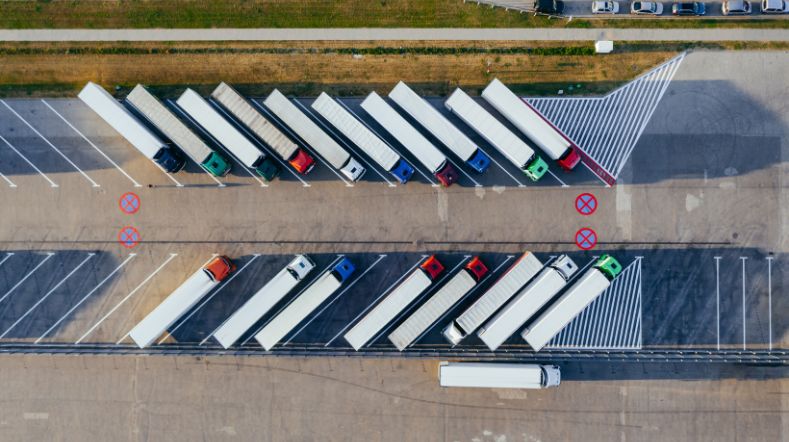
Joint research on motion sickness essential for autonomous vehicle acceptance
As automated driving systems (ADS) become more prevalent, drivers will eventually transition into being passengers more and more often, making them more prone to motion sickness. TNO has a lengthy track record of researching motion sickness and is working with industry partners to gain insights into and develop solutions for this issue to benefit the development of self-driving vehicles.

'Self-driving cars will eventually, by definition, only have passengers on board. As such, the majority of occupants will experience motion sickness, unless we take measures to prevent that.'
The common problem of motion sickness has long plagued drivers and in particular passengers. Research shows that, on average, a staggering 62% of passengers are prone to it, compared to only 24% of drivers. With vehicles assuming more driving responsibilities in the future, the incidence of motion sickness is expected to rise.
Jelte Bos, Senior Scientist at TNO and a specialist in motion sickness and disorientation: 'Currently, two-thirds of all vehicle occupants are drivers. Cars are designed for drivers, who are less prone to motion sickness. However, self-driving cars will eventually, by definition, only have passengers on board. As such, the majority of occupants will experience motion sickness, unless we take measures to prevent that. The automotive industry recognises the urgency of this issue and all car manufacturers are working to address it.'
Abnormal stimuli
TNO has a long-standing history of researching all forms of motion sickness: not only on land, at sea and in the air, but also in space, tall buildings, simulators and virtual reality. This extensive research has led to an increased understanding of its origins.
Bos pulls out a model of the human organs of balance from his pocket: 'This is where it all begins. The organs of balance are located in a hollow cavity in your skull and is filled with fluid. It is responsible for your perception of self-motion.'
'When you turn your head, the fluid in these organs is motionless relative to Earth, thus moving relative to your head. Hair cells connected to a little valve in the fluid inform your brain whether you are turning.'
'Additionally, there are also tiny crystals (otoliths, or ‘ear stones’) in these organs of balance, which help us detect other movements. Incidentally, the term ‘sickness' is inaccurate because it’s a normal response of your body to an abnormal stimulus. You don’t get sick from walking, cycling or running. It only happens when you’re propelled artificially, such as in a car, on a plane or aboard a ship, or when wearing a VR headset.'
Anticipation is key
The reason why a driver experiences much less discomfort than a passenger is because the driver is able to anticipate their own steering, braking or accelerating actions. Bos: 'Besides the organs of balance, anticipation is key too. Processing sensory stimuli takes time. To be prepared for what’s ahead, your brain makes predictions based on past experiences in your life. If there’s a mismatch between what you see and what you predict, motion sickness can occur. Even front seat passengers are not immune, because they don’t know whether a turn will be wide or tight, or when and how abruptly the driver will brake.'
While we broadly understand how motion sickness develops, many questions remain unanswered. These include the correlation between specific movements and the onset of motion sickness, or what determines why some people are greatly affected while others are barely affected, if at all.
Advanced motion simulator
TNO’s expertise and facilities in the field of motion sickness are unparalleled worldwide. Jan Souman, Senior Scientist Human Factors for TNO’s mobility division, works closely with Jelte Bos to put the gathered knowledge on motion sickness to use for the automotive industry. 'TNO can offer significant added value to automotive partners. Together with colleagues in Soesterberg, we have a team of over 100 human-factor experts and state-of-the-art facilities.'
In Soesterberg, TNO houses a six degrees of freedom centrufuge-based motion simulator, which is unique in the world. This simulator, called Desdemona (originally built as a disorientation demonstrator) is used for research in which participants can experience all possible flying, sailing or driving situations.
Another space houses a 40-metre-long test track to examine the effects of horizontal accelerations. Additionally, participants are tested for motion sickness in practice while driving or being driven along a test track owned by the Ministry of Defence between Soesterberg and Amersfoort.
Predicting motion sickness
Numerous studies have provided much greater insight into the accelerations that induce motion sickness. Jan Souman: 'Older studies on seasickness revealed a clear peak at a motion frequency of approximately once every six seconds – a rhythm that causes the most discomfort for people. In a large-scale study with about 200 participants, we investigated whether this also applied to horizontal accelerations in a car. This appeared to be broadly the case, but not entirely, so we developed a new curve for motion sickness and translated the results into a model.'
Car manufacturers use this model to predict the percentage of passengers who will experience motion sickness with certain driving behaviours. This allows well-being and comfort to be taken into account when programming driving behaviour in autonomous vehicles. Safety also plays a role, as Jan Souman explains: 'With the current generation of driver assistance systems, the driver remains responsible for the driving task; they must always be alert. If you’re not feeling well, that’s a danger.'
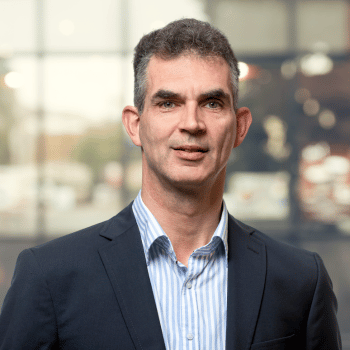
'With the current generation of driver assistance systems, the driver remains responsible for the driving task; they must always be alert. If you’re not feeling well, that’s a danger.'
Cybersickness
In addition to knowledge about motion sickness resulting from physical accelerations, TNO also has expertise in the field of ‘cybersickness’. Jelte Bos: 'TNO conducts research on cybersickness for the Ministry of Defence, which makes extensive use of Virtual Reality (VR) applications. Cybersickness partly arises for the same reasons as motion sickness: the senses perceive something different from what the brain expects. Moreover, there are significant individual differences between the visual perception of movement and actual movement in a simulator.'
'On top of that, there are significant shortcomings in visual display technologies such as screens, projectors and VR headsets, which can lead to headaches, blurred vision or eye strain.'
This expertise is valuable, because with the advent of automated driving, we expect to see more VR applications in cars. However, the combination of physical and virtual motion sickness is new territory for everyone.
XR as a possible solution
The knowledge that TNO is accruing primarily focuses on adjusting vehicle movements to minimise discomfort for occupants. However, it is not the only solution. Jelte Bos: 'For instance, in a doctoral research project we supervised, passengers received various cues, such as sounds or vibrations in the seat, to better anticipate movement.'
Jan Souman notes that many manufacturers are exploring active suspension systems, which disconnect the motion of the car and its occupants from the road as much as possible. 'Additionally, using visual cues in the car can help your brain interpret movements. This is where eXtended Reality (XR) could be an important part of the solution. Visual cues on your display or VR headset as you’re playing a game or watching a movie can help anticipate movements, and these cues can be supported by sounds or vibrations.'
'Another alternative would be allowing navigation systems to offer alternative routes, which would be slightly longer but have a lower risk of inducing motion sickness.'
Joint innovation centre
All these potential solutions require further research. Many questions remain unanswered and research is complex. At the same time, the automotive industry’s need is significant, as managing motion sickness is crucial in bolstering the acceptance of autonomous vehicles.
Jelte Bos: 'We’ll only find true solutions through fundamental research, following an integrated approach. However, this comes at a cost. As such, we at TNO advocate for a broader research domain.'
'Alongside the automotive industry, this should involve the maritime sector, aviation, tech companies, the gaming industry, the medical field and policymakers, allowing TNO to serve in a unique position as the core of a joint innovation centre. This would enable us to look beyond motion sickness and help anticipate the effects of and solutions to cybersickness before VR headsets enter the automotive realm.'
Meet the expert 'The route to safe automated driving'
Want the latest updates on safe automated driving from one of our experts? Join one or more sessions.
Get inspired
Getting on board with autonomous transport? Five things you need to know
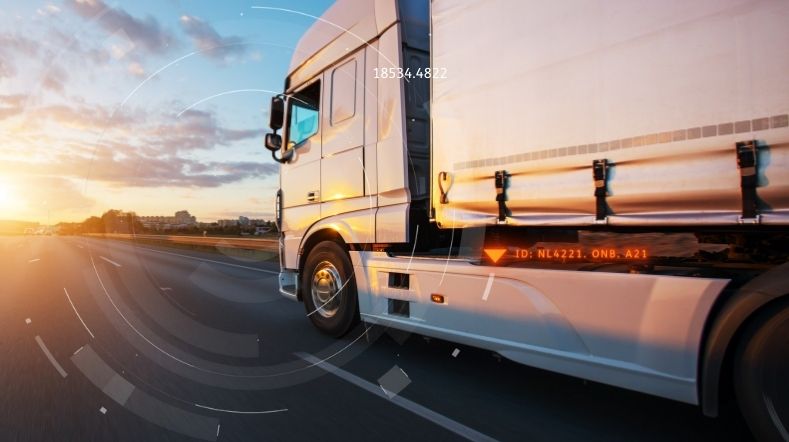

Connected mobility
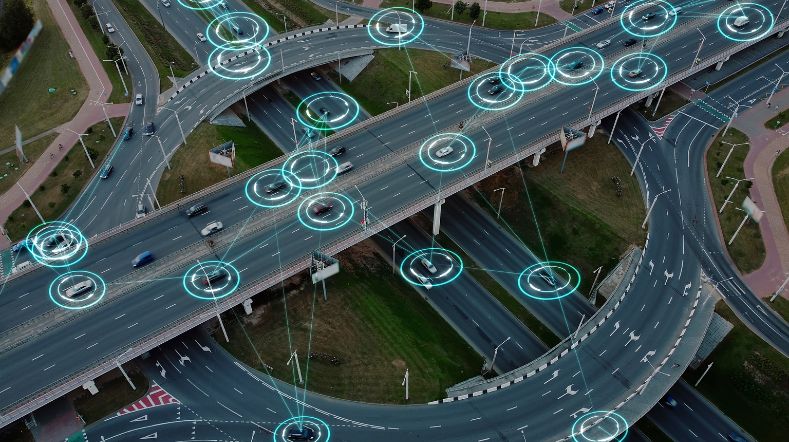

Working on safer self-driving cars
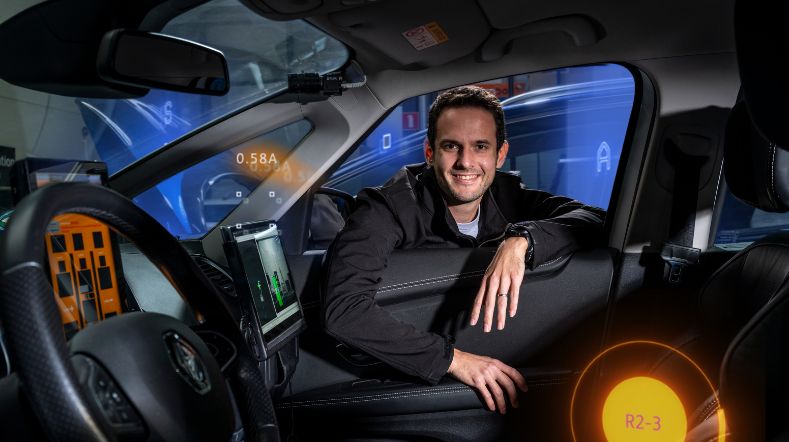

Goodyear and TNO further integrate tyre and vehicle technology to mitigate crashes in adverse weather
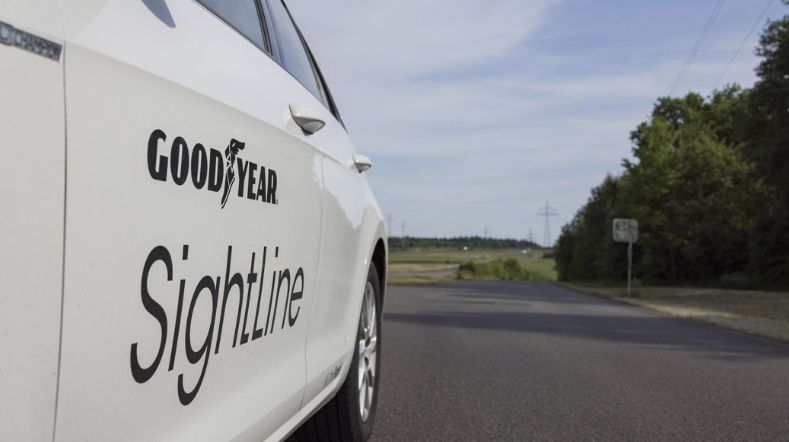

TNO CEYAS offers logistics partners advantage yard automation
